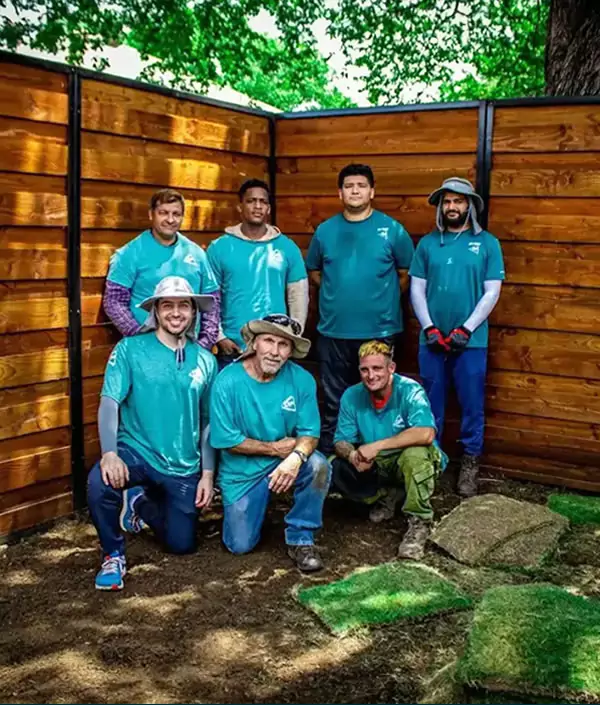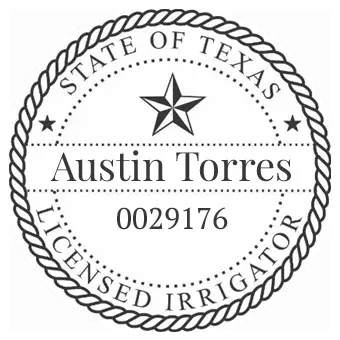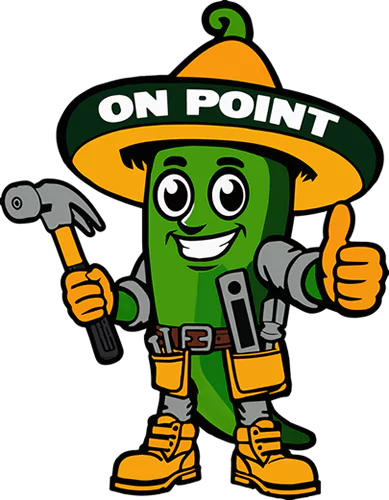

Sod grass, also known as turfgrass, is pre-grown grass that is cultivated on a farm and then harvested as a thick layer of soil with an established network of grass roots. It is used for quickly establishing a lawn or turf area.
St. Augustine grass is a warm-season grass variety commonly used in southern regions. It has a dark green color, broad blades, and is known for its ability to tolerate heat and shade.
Zoysia grass is another warm-season grass that is known for its dense growth and ability to withstand foot traffic. It has a medium to fine texture and provides a lush, green lawn.
Bermuda grass is a warm-season grass that is highly drought-resistant and can tolerate a wide range of soil types. It has a fine texture and is often used for sports fields and golf courses.
The ideal time for sod grass installation is during the grass’s active growing season. For St. Augustine and Bermuda grass, this is typically during late spring to early summer. Zoysia grass is best installed during late spring to early summer or early fall.
Start by removing any existing vegetation, rocks, or debris from the area. Till the soil to a depth of 4-6 inches and add organic matter, such as compost, to improve soil structure and fertility. Level the soil surface and ensure proper drainage.
It is not recommended to install sod grass over an existing lawn. The old grass should be removed, and the soil prepared properly to ensure good establishment of the new sod.
Watering is crucial for the establishment of sod grass. Water the sod immediately after installation, thoroughly soaking the soil. Keep the soil consistently moist for the first two weeks, watering lightly multiple times a day. Gradually reduce the frequency but increase the amount of water over the following weeks.
Wait until the sod has firmly rooted in the soil, usually after about two to three weeks, before mowing. Set the mower height to the recommended level for your specific grass type and mow when the grass reaches the recommended height.
It is best to avoid walking on newly installed sod grass for the first two weeks to allow the roots to establish firmly. After that period, you can gradually increase foot traffic, but avoid heavy use until the grass is fully established.
Western Red Cedar is highly regarded for its natural beauty, durability, and resistance to decay and insect damage. It is known for its rich reddish-brown color, straight grain, and exceptional stability, making it an excellent choice for fence building.
Pine is a popular and cost-effective option for fence construction. It is readily available, easy to work with, and can be treated to enhance its resistance to decay and insects. Pine fences can be stained or painted to achieve the desired look.
Japanese Cedar, also known as Cryptomeria, offers a unique aesthetic with its reddish-brown color and straight, knot-free appearance. It is naturally resistant to rot and insect infestation, making it a durable option for fences.
Western Red Cedar and Japanese Cedar are both highly durable and naturally resistant to decay and insects. Pine, on the other hand, is less naturally resistant and may require treatment to enhance its longevity.
Western Red Cedar and Japanese Cedar are naturally resistant to decay and insects and can be left untreated. However, treating them with a sealant or stain can enhance their durability and preserve their appearance. Pine fences, especially if used in outdoor settings, typically require treatment to improve their resistance to decay and insects.
Regular maintenance is important for any wood fence. This typically involves cleaning the surface, removing debris, and periodically reapplying a sealant or stain to protect the wood from weathering and to maintain its appearance.
Yes, all three types of wood can be painted or stained to achieve the desired look. However, many homeowners prefer to showcase the natural beauty of Western Red Cedar and Japanese Cedar by leaving them untreated or applying a clear sealant.
Yes, Western Red Cedar, Pine, and Japanese Cedar can all be used for privacy fences. They can be constructed in various styles, including solid board, board-on-board, or shadow box designs, to provide privacy and security.
Consider factors such as your budget, desired appearance, durability requirements, and local climate conditions when choosing a wood type. It is also helpful to consult with a professional fence builder or local supplier who can provide guidance based on your specific needs and preferences.
Installing an irrigation system ensures efficient watering, promotes healthy plant growth, and saves time and effort compared to manual watering. It helps maintain an optimal moisture level in your lawn, especially during the hot and dry climate of North Texas.
A typical residential irrigation system consists of a controller (timer), valves, pipes, sprinkler heads, and possibly sensors such as rain sensors or soil moisture sensors. These components work together to deliver water to your lawn in a controlled and automated manner.
It is generally recommended to water your lawn during the early morning hours, ideally between 4 am and 8 am. This allows the water to penetrate the soil and be absorbed by the grass before the heat of the day, minimizing evaporation and maximizing water uptake by the plants.
The frequency of watering depends on several factors, such as the grass type, soil type, weather conditions, and season. As a general guideline, most lawns in North Texas require around 1 inch of water per week, including rainfall. Splitting this amount into two or three watering sessions throughout the week is often beneficial.
Yes, modern irrigation controllers often have programmable features that allow you to adjust watering schedules based on the season. You can set different watering durations and frequencies to accommodate the changing needs of your lawn throughout the year.
To promote water efficiency, consider using features such as smart controllers that adjust watering based on weather data or soil moisture sensors. Additionally, check for and repair any leaks, maintain properly adjusted sprinkler heads, and make sure the irrigation system is properly zoned to avoid overwatering or watering non-landscaped areas.
North Texas may have specific water restrictions or guidelines, particularly during periods of drought. It’s important to familiarize yourself with local regulations and follow any watering schedules or restrictions imposed by your water district or municipality.
Installing an irrigation system can be complex, involving electrical connections and proper zoning to ensure adequate water coverage. It is generally recommended to hire a professional irrigation contractor who has the expertise and knowledge to design and install an efficient system tailored to your lawn’s needs.
Regular maintenance is crucial for the proper functioning of your irrigation system. This includes checking for leaks, clogs, or damaged components, adjusting sprinkler heads for proper coverage, and ensuring the controller is programmed correctly. It’s also important to winterize the system to prevent freezing damage during colder months.
Some water districts or municipalities in North Texas offer water-saving incentives, rebates, or programs that encourage the installation of water-efficient irrigation systems. Check with your local water provider to see if any such incentives are available in your area.
Common signs of a malfunctioning sprinkler irrigation system include uneven water distribution, low water pressure, leaking or broken sprinkler heads, clogged nozzles, water pooling in certain areas, or the system not turning on/off as programmed.
Minor repairs, such as replacing a sprinkler head or clearing a clogged nozzle, can often be done by homeowners with basic DIY skills. However, for more complex issues, it’s recommended to hire a professional sprinkler repair service that has the expertise and proper tools to diagnose and fix the problem effectively.
Signs of a leak in a sprinkler system include water pooling or soggy areas, unexplained increase in water usage, hissing sounds from underground pipes, or reduced water pressure in some zones. A professional can perform a leak detection test to locate and repair any leaks in the system.
First, check if the controller is programmed correctly and the power source is functioning. If the controller appears to be working fine, the issue may be with the valves or wiring. It’s advisable to contact a professional sprinkler repair service to diagnose and fix the electrical or valve-related problem.
It’s recommended to check and adjust sprinkler heads at least once or twice a year. Look for any misaligned heads, blocked or clogged nozzles, or damaged components. Adjust the spray pattern and range as needed to ensure proper water coverage.
Insufficient water coverage can be caused by various factors, such as misaligned or blocked sprinkler heads, insufficient water pressure, or zoning issues. Check and adjust the sprinkler heads, clear any clogs, and ensure proper water pressure. If the problem persists, consult a professional to identify and resolve the underlying issue.
To maintain water efficiency, regularly monitor and adjust your sprinkler system. Ensure proper coverage, fix any leaks or broken components promptly, follow watering restrictions if applicable, and consider upgrading to water-saving technologies such as weather-based or smart irrigation controllers.
Yes, winterizing your sprinkler system is essential in North Texas to protect it from freezing temperatures. This involves draining all water from the system to prevent damage to pipes, valves, and sprinkler heads. It’s recommended to hire a professional sprinkler service to perform proper winterization.
DIY irrigation repair kits can be useful for minor repairs and replacements of common components such as sprinkler heads or nozzles. However, for more complex issues, it’s best to consult a professional sprinkler repair service to ensure proper diagnosis and repair of the problem.
Local regulations and guidelines regarding sprinkler irrigation repairs may vary. It’s advisable to check with your local water district or municipality for any specific rules, restrictions, or permits required

